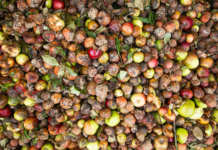The minister of state (IC) for Ayush Shripad Yesso Naik inaugurated the Regional Raw Drug Repository (RRDR) on 22 October 2020 at All India Institute of Ayurveda, New Delhi, through a virtual function. This RRDR is the second in the series of repositories proposed by the National Medicinal Plants Board (NMPB), Ministry of Ayush, and dedicated to the Trans-Ganga Plain Region.
There is an increased demand for natural healing and herbal products across the globe. Covid has further pushed the demand, and many of the key herbs like Asvagandha, Giloi, Tulsi, Kalmegh, Mulethi are in high demand. With the increasing demand for herbal medicines, the NMPB, which is already engaged in developing a mechanism to ensure supply of quality raw material to the Ayush industry and consumers, expediting the process of establishing the Raw Drug Repositories.
NMPB is already involved in developing policies in this direction and attaining speedy development in the areas of making sustainable availability of authentic raw material of medicinal plants for the Ayush industries. To document the diversity in the genetics and chemistry of medicinal plants, eight RRDR and one NRDR have been proposed by ), ministry of Ayush. Out of them, three Regional Raw Drug Repositories are ready.
According to the press statement, RRDR for Trans- Ganga Plain Region covers four states -Haryana, Chandigarh, Delhi, and Punjab. This region has a huge potential for medicinal raw materials. Therefore, this RRDR would play a stellar role in collecting, documentation, and authenticating raw drugs collected largely from the respective agro-climatic region.
NMPB also released a protocol titled “Standard protocol for Quality assessment of Raw Medicinal Plants Material” based on Rasa in collaboration with All India Institute of Ayurveda, New Delhi, and National Institute of Ayurveda, Jaipur.
IndiFoodBev — authentic, impactful and influential
An English-language food and beverage processing and packaging industry B2B platform in print and web, IndiFoodBev is in its third year of publication. It is said that the Indian food and beverage industries represent approximately US$ 900 billion in revenues which implies more than 20% of the country’s GDP. Eliminating the wastage on the farmside can help to deliver more protein to a higher number of the population apart from generating sizable exports. The savings in soil, seeds, water, fertilizer, energy and ultimately food and nutrition could be the most immense contribution that country is poised to make to the moderation of climate change.
To improve your marketing and grow sales to the food and beverage processing and packaging industry, talk to us. Our research and consulting company IppStar [www.ippstar.org] can assess your potential and addressable markets in light of the competition. We can discuss marketing, communication, and sales strategies for market entry and growth.
Suppliers and service providers with a strategy and budget for targeted marketing can discuss using our hybrid print, web, video, and social media channels to create brand recognition linked to market relevance. Our technical writers are ready to meet you and your customers for content.
The second largest producer of fruit and vegetables in the world is continuously expanding processing capacities and delivery systems with appropriate innovative technologies. We cover product and consumer trends, nutrition, processing, research, equipment and packaging from farm to thali. Get our 2025 media kit and recalibrate your role in this dynamic market. Enhance your visibility and relevance to existing markets and turn potential customers into conversations. Ask for a sample copy of our bi-monthly in print or our weekly IndiFoodBev eZine each Wednesday.
For editorial info@ippgroup.in — for advertisement ads1@ippgroup.in and for subscriptions subscription@ippgroup.in
Naresh Khanna – 10 February 2025
Subscribe Now











